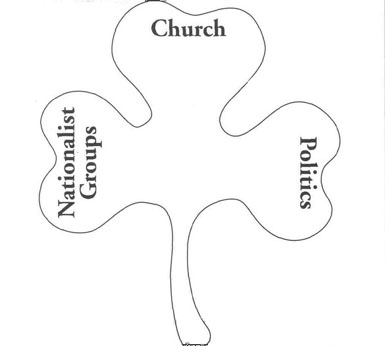|
C U R R I C U L U M M A T E R I A L S
|
Margaret Bullers Funchion
Main Ideas
The Irish have been present in Chicago from its earliest days. Their numbers grew rapidly following the Great Famine — the biggest killer famine in recorded history. Most of the early Irish immigrants were poor, Catholic, and unskilled workers. Later, immigrants and their descendants slowly rose in economic and occupational status.The everyday lives of the turn of the century Irish were chronicled in newspaper columns by Finley Peter Dunne.
The Irish became active in and were sustained by three activities: their Catholic religion, their involvement in Ireland's freedom cause, and their involvement in Chicago politics.
The local Catholic church established two types of parishes: special ones without boundaries for non-English speaking immigrants and ones with neighborhood boundaries. Since the Irish were the major, if not the only, English-speaking group, they obtained dominance by default in the structure of the church. In turn, the local parish aided and sustained them by providing education, social services, and a focus for social life.
Throughout the latter nineteenth and early-twentieth centuries, Ireland was slowly agitating and fighting for independence from England. On the local scene, a number of Irish became involved in organizations that succored groups back home.
Eventually, the Irish became the most important ethnic group in local politics.They were an integral part of what was called "boodle" politics — machine-style government based on patronage jobs. They benefited greatly from this system and also learned to build coalitions in order to attain/retain power.
During the nineteenth and early-twentieth centuries, Irish political involvement and their Catholic religion spurred some native-born Protestant Americans to conduct an anti-Irish campaign, which affected employment opportunities and promoted a negative image of the Irish.
Connection with the Curriculum
Written for both history (local, immigration) and language arts, these activities can be part of multicultural studies and/or a springboard for more thorough study of the Irish — here or in Ireland, past or present.
Teaching Level
Grades 6-8, but the materials may be adapted for high school
Materials for Each Student
• A teacher summary of the narrative portion of the article and/or copies of the article, depending on students' reading level
• Copies of the handouts
• Access to a library or, minimally, to basic references such as encyclopedias and dictionaries
Objectives for Each Student
• Acquire and demonstrate knowledge of key facts and concepts about the nineteenth and early-twentieth century Irish immigrants in Chicago
• Explore a bit of Irish immigrant culture through language activities
• Become acquainted with some of Chicago's better-known Irish Americans
• Develop an appreciation for oral history by participating in research and/or listening to classmates' accounts
• Compare and contrast the experiences of different immigrant groups
SUGGESTIONS FOR
TEACHING THE LESSON
|
Opening the Lesson
• Talk about the meaning of the term "immigrants" and how the United States, especially its cities, became multi-ethnic.
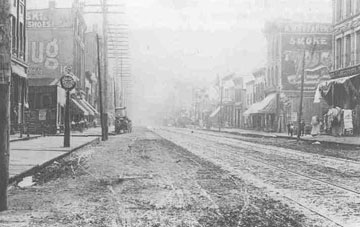 2800 block of South Archer Avenue, 1885
2800 block of South Archer Avenue, 1885
Courtesy: Chicago Historical Society Photograph: ICHi-09283
16
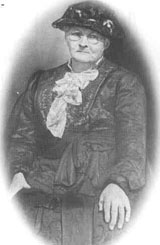 "Mother" Jones
"Mother" Jones
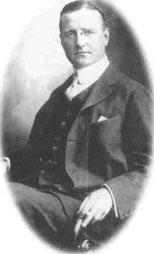
Peter Finley Dunne
Courtesy: Chicago Historical Society
Photograph; ICHi-10168
|
• Locate Ireland on a world map. Trace the route(s) and talk about the modes of transportation that immigrants took from Ireland to Chicago.
• Involve the class in brainstorming the words "Ireland" and "Irish." This can be done in small groups or with the whole class. Take time out to discuss the students' contributions.
• If you know or decide to obtain background on the Great Famine of the 1840s in Ireland, share that information with your students.
• Give a summary of the article or distribute copies, and read it with the class. Some concepts will undoubtedly require explanation, particularly machine politics.
Developing the Lesson
• Depending on the level and ability of your students, either assign Activity One to be completed individually, or work through it as a class. Questions three through six lend themselves to further discussion as, of course, does Part 2.
• Activity Two is designed for small groups. Each group of two to four can research one person and as many words as you think appropriate, given the time available and students' talents. I suggest that the reports be brief and oral since Activity 4 calls for more lengthy written work. I used The Irish-American Almanac and Green Pages (see Bibliography) for a number of the words.
• Discuss or present the meaning of satire and the use of dialect. Read through the opening explanation of Activity 3. Ask for volunteers to attempt to read the selections using an Irish brogue. Pairs of students may want to act out a neighborhood tavern scene. Discuss the meaning of the selections. Point out when they were written and ask if they have any relevance today.
• Talk about oral history. Read through the options in Activity 4. Length and depth of the reports as well as amount of time given are left to the discretion of each teacher.
Concluding the Lesson
• Set aside a class period or two for the presentation of the Activity 4 reports. As a class, discuss how individual stories compared with the story of the "typical" Irish immigrant.
• If possible, invite a present-day Irish immigrant to be a guest speaker and/or conclude with the rousing note of viewing a portion of one of the videos, Riverdance or Lord of the Dance. Note that Riverdance contains some dances inspired by other countries, and Lord of the Dance contains at least one number that may be deemed too risque for some student audiences.
Extending the Lesson
• Any of the following might be assigned:
- Read a book about Irish immigrants or Ireland. Particularly good choices are James E. Johnson & Jack Kavanagh, Irish in America (Minneapolis: Lerner Publications Company, 1994) and Joan Lowery Nixon, Land of Promise (New York: Bantam Books, 1992).
- Read a book of Irish folk or fairytales.
- Surf the internet for sites on the Irish in Chicago.
- Read and collect current articles on Irish Americans or Ireland.
- Write to the Irish Consulate in Chicago for information about present-day immigrants or other Irish topics.
- Research Irish music and/or bring selections to play for the class.
- If the tapes can be obtained, view one of the following productions: The Great Irish Famine (BBC/A&E Network Co-production, 1995),The Irish in America (Greystone Communications for A&E Network, 1997), and Out of Ireland: The Story of Irish Immigration to America (Video Finders, 1994).
- Choose a current topic in one's own neighborhood and write a newspaper column in the style of Finley Peter Dunne. The setting could be a mall, a video store, etc.
Assessing the Lesson
Assessment of learning may be based on the following:
• Accuracy of answers in Activity One
• Effectiveness of research and group cooperation in Activity Two
• Class participation in Activity Three
• Established criteria for reports, as well as facility in comparing and contrasting the experiences of different ethnic groups in Activity Four
17

Part 1:
Using information from the article, answer the following questions.
- What country ruled all of Ireland until the 1920s?
- What language did most Irish immigrants speak?
- During the 1840s, what event in Ireland caused one million people to emigrate to America?
- Describe the economic conditions of the nineteenth-century Irish in Chicago.
- Why did some native Anglo-Americans carry on an anti-Irish campaign?
- Why did Chicago attract the Irish or, for that matter, immigrants from other countries?
- What are patronage jobs?
18

Part 2:
In Chicago, the three main institutions or activities that sustained the Irish were:
- The Catholic church
- Nationalist groups — those involved in the fight "back home" for Ireland's freedom
from England
- Local Chicago politics
The shamrock — a three-leafed clover — is native to Ireland and the country's premier symbol. Legend purports that St. Patrick, the man most responsible for converting the Irish to Christianity, used it to illustrate the Christian concept of the Trinity.
In the shamrock below, write two sentences explaining how each pillar of the early Irish immigrants helped them in their new home.
19

The following words or expressions, which have become part of American speech, either came from the original language of the Irish people — Irish (Gaelic) — or from Irish names or events. Find their meanings and origins. (Be aware that some of the words are listed twice in dictionaries. You will have to look at both entries to find the meaning with Irish origins.)
bard
blarney
bog, bogged down
bother
boycott
brogue
donnybrook
galore
hooligan
hubbub
keen
leprechaun
limerick
shamrock
shenanigan
slogan
smithereens
whisky
beyond the pale
|
Brendan
Brian
Bridget
Colleen
Eileen
Erin
Kathleen
Liam
Maura
Maureen
Patrick
Sean
|
The following people were or are famous Chicagoans of Irish descent. Find information about one of them and present a short report to the class. Include photos or original artwork to illustrate their connection to Chicago history.
Louis H. Sullivan
Charles Albert Comiskey
Finley Peter Dunne
Richard J. Daley
Jane Byrne
Mary Harris "Mother" Jones
|
Edward M. Dunne
Margaret Haley
Michael Flatley
Bill Murray
James T. Farrell
|
Optional oral or written report: The American celebration of Halloween has Irish roots. Find information about the original Celtic feast and explain what customs in America were borrowed.
20

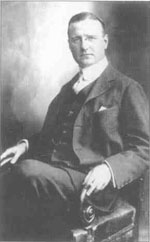 Finley Peter Dunne
Finley Peter Dunne
Courtesy: Chicago Historical Society
Photograph; ICHi-10168
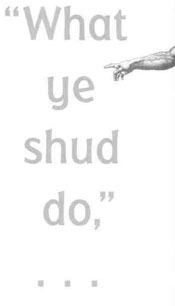
|
Finley Peter Dunne wrote newspaper columns set in Mr. Dooley's tavern, a fictitious place where Mr. Dooley and some of his regular customers talked about various issues in the Irish community of the turn of the century. Dunne used satire and wrote in the form of an Irish brogue.
Have fun trying to read Mr. Dooley's thoughts and trying to explain the point the author is trying to make.
- From the April 7,1894, column (Chicago Evening Post), describing the counting of election results:
We cast twinty-one hundherd votes f'r Duggan an' there was only five hundherd votes in th' precint. We'd a cast more, but th' tickets give out. They was tin votes in th' box f'r Schwartzmeister whin we counted up an I felt that mortified I near died, me bein' precint captain an res-ponsible. 'What'll we do with thim,' says Dorsey, the plumber. 'Throw thim out th' window,' says I. Just thin Dorseys nanny goat that died nixt year, put her head through th' dure. 'Monica, says Dorsey (he had pretty names f'r all his goats). 'Monica,' he says, 'Ar-re ye hungry?' he says. 'Ye poor dear.' Th' goat give him a pleadin' look out iv her big brown eyes. 'Can't I make ye up a nice supper,' says Dorsey. 'Do ye like paper?' he says. 'Would ye like to help destroy a Dutchman,' he says, 'an perform a service f'r ye'er counthry,' he says. Thin he wint out into th' nex room an come back with a bottle iv catchup, an' he poured it on th' Schwartzmeister ballots an Monica eat them without winkin.
- From the December 5,1896, column (Chicago Evening Post), relating Mr. Dooley's remarks to Mr. Hennessey on the subject of charity to the poor:
"What ye shud do," said Mr. Dooley, "is to get ye'er wife to join an organized charity. Th' throuble with her is she gives to onworthy people an' in a haphazard way that tinds to make paupers. If they'se annything will make a person ongrateful an depindent it's to give thim something to eat whin they're hungry without knowin whether they are desarvin iv th' delicate attintion. A man, or a woman ayether, has to have what ye may call peculiar qualifications f'r to gain th' lump iv coal or th' pound iv steak that an organized charity gives out. He must be honest an' sober an' industhrious. He must have a frind in th' organization. He must have arned th' right to beg his bread be th' sweat iv his brow. He must be able to comport himself like a gintleman in fair society an' play a good hand at whist. He must have a mar-ridge license over th' pianny an' a goold-edged Bible on th' marble-topped table. A pauper that wud disbelieve there was a God afther thrampin th' sthreets in search iv food an' calmin' an on reasonable stomach with th' eastwind is no object iv charity. What he needs is th' attintion iv a polisman. I've aften wondhered why a man that was fit to dhraw a ton iv slate coal an' a gobiv liver fr'm th' relief an' aid society didn't apply f'r a cabinet position or a place in a bank. He'd be sthrong f'r ayether.
21

Choose one of the following activities:
- If you are an Irish-American, interview your oldest Irish relative and ask him/her for stories about your Irish ancestor(s). When did she/he/they arrive in America? Why did they move here? Did they move directly from Ireland to Illinois? What was their life like during their first years in this country? Where did they live? What did they do for a living? Does your family participate in any Irish activities or preserve any Irish customs? Prepare a report to present to the class. You might want to enhance it with illustrations or family photos.
- If you are not Irish, interview your oldest available relative about either your major
ethnic/racial group or the one of your choice. Ask your relative the questions listed under 1 above. Prepare a report about your family history in which you compare and contrast it with that of the Irish.
- If you are an immigrant, tell your own story to the class. Include information such as answers to the questions listed in 1 above.
- Research Ireland's Great Famine of the 1840s or the terrible "coffin" ships that transported the Irish immigrants in those years. Either prepare a report or pretend you are a Famine immigrant and write four or five entries for your diary. If you choose the diary, include at least one entry each for: 1) leaving Ireland, 2) life on the ship, 3) first days in Illinois, and 4) life in Illinois after six months.

Click Here to return to the Article
22
|




